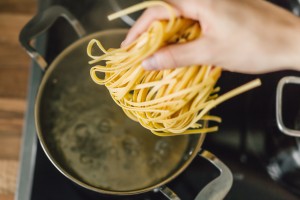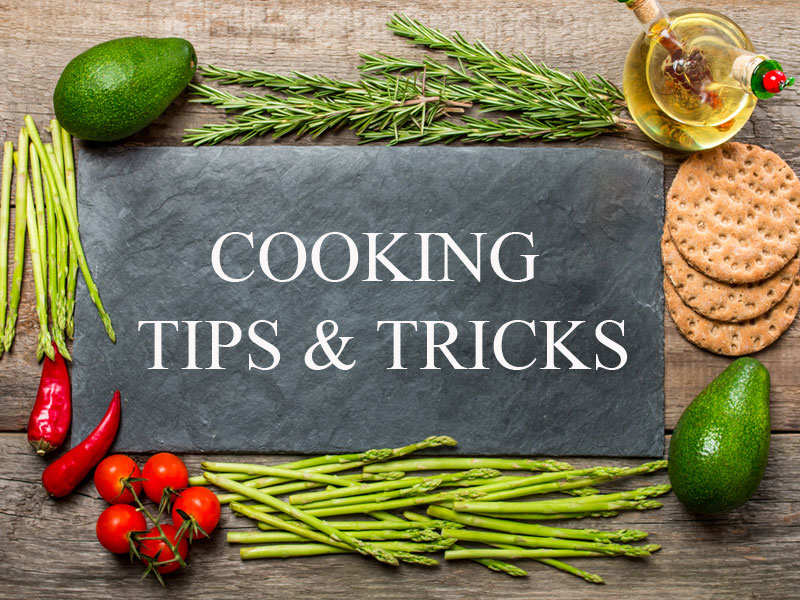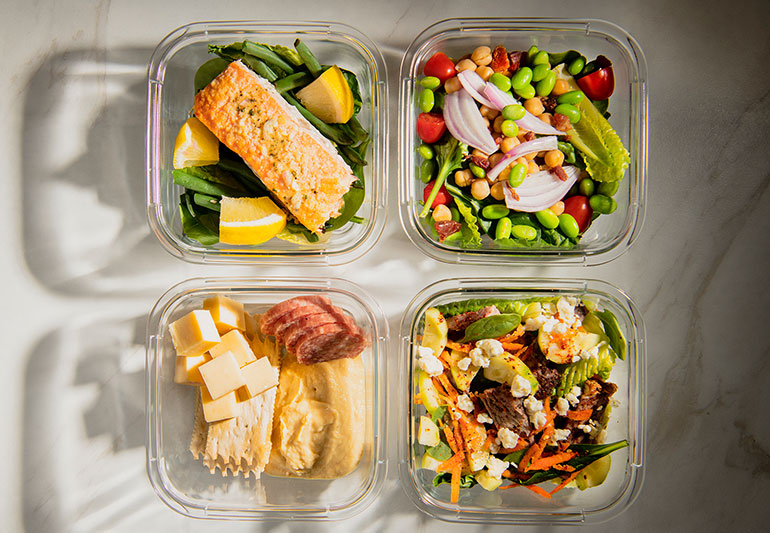
These tips and tricks will help both novice and experienced cooks make great food. Learn the correct order of ingredients when adding them to a recipe. Different ingredients cook at different rates. Additionally, you will learn how to use your senses and prepare food. If you don't have the sense of smell, you can learn to use a thermometer for checking the temperature of food. Finally, don't be afraid trying out new tastes and textures.
10 basic cooking tricks
Learning to cook is an essential skill to improve the quality of your life, especially if you like to experiment with new dishes. Learn basic cooking skills to make even the most simple dishes delicious and healthier. There are many ways you can cook chicken, salmon, black beans, and broccoli. The first step in the process is to beat eggs. Cooking eggs takes just five minutes! Blotting the meat before cooking is another useful cooking tip. This ensures that the meat has a nice sear.
Make sure to defrost any frozen ingredients you use in cooking. This will keep them from losing their texture. It is important to place frozen ingredients in a cabinet nearby so that they don't get heated up or steamy from the refrigerator. You can also preserve their flavor. If you don’t have one, you can keep them frozen in the fridge.
Proper measuring cups
A set of measuring cups comes in many sizes and shapes. A 6-piece set includes a measuring cup for each common measurement, including a 2/3 and a 3/4 cup. These cups are ideal for measuring dry ingredients like flour, but they can be cumbersome. A set of these cups is a great way to ensure precise measurements of all things, liquids included. Here are some useful tips for purchasing measuring cups for cooking.

First, ensure that you get a set of both liquid and dry measuring cups. They can be filled with dry ingredients, so you don't have to worry about them getting contaminated. It's best not to dip your measuring cup in flour or any other dry ingredient. This will cause the measurement to be inaccurate. In that case, you'll end up with a less accurate measurement because liquid measuring cups have an ambiguous measurement line.
Storing food in the right place
The first step in storing food correctly is to identify the items you'll be using. Some foods can be stored in the refrigerator or pantry, while others don't go bad. Glass jars are best for other items. Non-perishable items should be stored in glass jars and airtight containers. Store them in a dark, cool location away from direct sunlight. Listed below are a few tips to store food correctly in the fridge.
First, make sure your kitchen is clean and clutter-free. Avoid storing food near household items. Keep food in cool, dark cabinets. Food is sensitive to temperature. Your containers should be tightly fitted to ensure food remains fresh. Keep food out of direct heat sources such as pipes. Foods that are exposed to sunlight for too long can also change their color.
Food preparation with your own senses
It can improve the cooking experience by using all your senses. Your taste buds are a great way to choose the right ingredients. You will find it easier to predict the cooking times if you can envision the flavors in a particular dish. The same goes for your visual senses, including touch and smell. Listen to your gut and imagine the flavor of ingredients when shopping. For example, you might substitute broccoli for red cabbage if you think it will taste equally good.

Using your five senses will make it easier for you to recognize new foods and assess their quality. You will discover that there is a whole world beyond what you think. You can learn about the fascinating science of flavour and learn to use your senses to appreciate food as you cook. You'll be able to distinguish between an authentic emoji peach from a fake one. Even rhubarb and grapefruit can be appreciated bitterly. If your kitchen is cluttered, you can use all your senses and look around to make sure that everything is in order.
FAQ
What can I learn about cooking?
Cooking classes are available throughout the country. Many schools offer courses on baking, pastry, or wine tasting. You can learn more about how to cook by enrolling in a class at either a local vocational school or community college.
How Long Does It Take to Be a Chef? What Is the Average Career Path?
A chef's career takes about five years. In this period, you will learn basic cooking skills and experience as a kitchen assistant. After you've completed your training you can apply to be a line cook or sous chef. The average salary for a chef ranges from $25,000 to $60,000 per year.
Do I need to attend culinary school to become a cook?
No. No. Some even went to culinary school just to gain experience. Most chefs prefer to go to culinary school to expand their professional opportunities. Culinary schools allow students to learn hands-on skills, and this helps them improve their cooking knowledge.
Which is the best way for you to learn how to cook?
Cooking is something that everyone should be able to do. You'll miss out on delicious meals if your skills are not up to par. First, find a recipe that appeals to you and then follow it closely. You'll then want to practice small adjustments until you feel confident making the dish. Finally, try cooking for others. This will help you improve at cooking and also allow you to test your skills.
Statistics
- According to the BLS, chefs earn $58,740 a year. (learnhowtobecome.org)
- The median pay for a chef or head cook is $53,380 per year or $25.66/hour, according to the U.S. Bureau of Labor Statistics (BLS). (learnhowtobecome.org)
- On average, chefs earn $58,740 a year, according to the BLS. - learnhowtobecome.org
External Links
How To
How to cook steak
The thickness and cooking method of any kind of meat will affect the way it is cooked. Thicker steaks, for example, are better cooked at low heat while thicker steaks require higher temperatures.
You should also ensure you don't overcook them because they'll lose flavor. Don't forget to take the steak out of the pan once it's finished. This will ensure that you don't burn your self.
Cooking times depend on the size of the steak and the desired degree of doneness. Here are some general guidelines:
Medium Rare: Cook to medium rare. This means that the internal temperature should reach 145degF (63degC). This process takes between 3 - 5 minutes per side.
Medium: Cook till medium. This usually takes only 6 minutes per side.
You are done when the internal temperatures reach 180°F (82°C). This takes between 8 and 12 minutes per side.